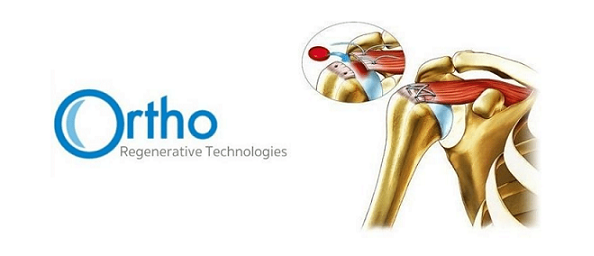
DUBLIN, June 3, 2021 /PRNewswire/ — Medtronic plc (NYSE:MDT), the global leader in medical technology, today announced the U.S. Food and Drug Administration (FDA) clearance of patient-specific UNiD™ Rods for use with Medtronic CD Horizon™ Solera™ Voyager™ and Infinity™ OCT spinal systems, expanding the utility of the company’s UNiD™ Adaptative Spine Intelligence (ASI) technology. UNiD Rods are designed for each patient and industrially pre-bent prior to surgery to accurately match an artificial intelligence (AI)-driven pre-operative surgical plan, which is created with UNiD™ ASI technology to precisely align patients’ spines1,2, reducing the risk of malalignment and associated revision surgeries.3 UNiD Rods are used to treat scoliosis, trauma, tumors, and complex degenerative conditions in adults and adolescent idiopathic scoliosis.
Spine surgery is one of the more complex procedures in healthcare because of the high number of different parameters that must be taken into consideration. In conventional spine surgery, surgeons manually bend spine rods in the operating room, and there can be large variability in outcomes. With the compatibility of UNiD Rods and Medtronic’s spinal systems, surgeons are able to tailor rods, as well as select the Medtronic interbody devices and other hardware that are best suited for their patient’s unique anatomy and sagittal alignment needs. Additionally, surgeons can use advanced navigation and robotics, like the Mazor™ Robotic Guidance System, with minimally invasive patient-specific rods to make procedures more precise and efficient and improve surgical outcomes.
The first surgery combining the CD Horizon Solera Voyagerminimally invasive spinal system with patient-specific UNiD Rods in combination with the Mazor platform was performed by Dr. Gregory Poulter, OrthoIndy Hospital, Indianapolis, Ind.
“Being able to integrate powerful complimentary technologies — AI, robotics and patient-specific implants — is the future of spine surgery and will change spine care for the better by streamlining my workflow and reducing surgical uncertainty,” said Dr. Poulter. “I’m not bending rods or increasing OR time with manual execution. Instead, I planned my first case with AI, selected the best hardware for my patient, executed the surgery with Mazor robotic-assisted delivery of the screws and was able to position the rod in 2.5 minutes, resulting in less blood loss and OR time and, most importantly, a predictable and precise alignment for my patient.”
Spine surgery is evolving and becoming increasingly personalized. It is no longer just driven by metal implants and instrumentation, but advanced imaging, navigation, robotics, and pre-operative planning aided by AI. UNiD™ Adaptive Spine Intelligence provides a planning service powered by AI, intra-operative execution, and insightful analytics of surgical results with the ultimate goal of improving clinical outcomes. This game changing solution is easily accessible to any surgeon via a user-friendly UNiD™ HUB platform.
“By combining our widely used spinal systems with UNiD Rods, Medtronic is putting surgeons on the forefront and revolutionizing spine care as the first company to offer a fully integrated solution with unparalleled technologies – AI-driven surgical planning, personalized spinal implants and robotic assisted surgical delivery that work together to advance patient care,” said Dan Wolf, vice president, Medicrea, within the Cranial & Spinal Technologies business, which is part of the Neuroscience Portfolio at Medtronic. “The next era of spine care is in personalized care that integrates the most advanced technologies to offer optimal planning, precision and predictability, so surgeons can do more for their patients.”
About UNiD™ ASI Platform
The UNiD ASI platform uses a database of thousands of surgical cases to power algorithms that visualize multiple permutations, allowing surgeons to better understand their patients alignment before surgery, customize a surgical plan with highly qualified UNiD™ LAB biomedical engineers and use a patient-specific rod industrially bent in the optimal plane to help ensure the goals of the surgery are achieved. AI helps visualize mechanisms above and below the spine that will most likely occur based on the surgical plan in order to enhance clinical and surgical workflow, increase reproducibility, improve surgical outcomes.
About the CD Horizon™ Solera™ Voyager™ and Infinity™ OCT Spinal Systems
These systems help provide immobilization and stabilization of spinal segments. The systems consists of a variety of screws and other implant components that can be rigidly locked into a variety of configurations, with each construct being tailor-made for the patient’s unique anatomy and sagittal alignment needs.
About Medtronic
Medtronic plc (www.medtronic.com), headquartered in Dublin, Ireland, is among the world’s largest medical technology, services, and solutions companies – alleviating pain, restoring health, and extending life for millions of people around the world. Medtronic employs more than 90,000 people worldwide, serving physicians, hospitals, and patients in more than 150 countries. The company is focused on collaborating with stakeholders around the world to take healthcare Further, Together.
Any forward-looking statements are subject to risks and uncertainties such as those described in Medtronic’s periodic reports on file with the Securities and Exchange Commission. Actual results may differ materially from anticipated results.
1 Cameron Barton BA, Andriy Noshchenko PhD, Vikas Patel MD, Christopher Kleck MD, Evalina Burger MD. Early Experience and Initial Outcomes with Patient Specific Spine Rods for Adult Spinal Deformity (ASD). Orthopedics. 2016; 39(2):79-86.
2 Kuris, Eren, et al. “Analysis of Radiographic Parameters Reveals Differences in Outcomes When Comparing Patient-Specific Short Rod Constructs to Conventional Rods in Lumbar Fusions for Degenerative Disease.” International Meeting on Advanced Spine Technologies. 2020.
3 Rothenfluh DA, Mueller DA, et al. Pelvic incidencelumbar lordosis mismatch predisposes to adjacent segment disease after lumbar spinal fusion. Eur Spine J (2015) 24:1251-1258
| Contacts: | |
| Kyra Nead | Ryan Weispfenning |
| Public Relations | Investor Relations |
| +1-303-886-2549 | +1-763-505-4626 |
SOURCE Medtronic plc








